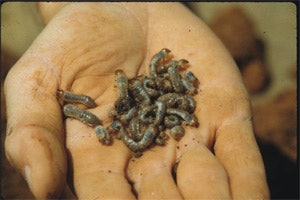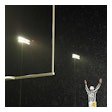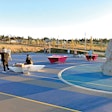How to fight (and beat) the weeds, diseases and insects that attack your athletic fields

The commission's dilemma illustrates one of the many misunderstandings about pesticide and herbicide use in recreation and athletic settings, says Dave Minner, a horticulture professor at Iowa State University and the education chairman for the Sports Turf Managers Association. "Turf managers want to do the right thing," he says. "The misunderstanding comes with the concept of zero tolerance, which is ridiculous. It prohibits all pesticides, under any circumstances. What you should do is consider pesticides as a last resort. But, by gosh, when you need them, you're real thankful that they're there."
Glyphosate provides a reliable solution to the problem in Albany, he adds. "Roundup is one of the most cost-effective, low-risk products out there, and it's the only way to kill all existing vegetation," Minner says. "Taking out that soil is not necessary. Plus, you don't know if the new soil that comes in will be contaminated with some type of pesticide."
Turfgrass experts recommend adhering to the U.S. Environmental Protection Agency's Integrated Pest Management approach, which relies on commonsense practices when tackling weeds, diseases and insects - all of which fall under the category of "pest." IPM (epa.gov/pesticides), which is now commonly practiced throughout the country, suggests a series of evaluations and control methods to determine the cause of a pest and the proper course of control. Designed for use in agricultural environments, but now a model for reducing pesticide risk in schools, homes and other settings, it includes the following four steps:
1. Set action thresholds. Determine a point at which pest populations or environmental conditions indicate that pest-control action must be taken. Sighting a single pest does not always mean control is needed.
2. Monitor and identify pests. Not all insects, weeds and other living organisms require control. Many organisms are innocuous, and some are even beneficial. Research the pest. Monitoring and identification removes the possibility that pesticides will be used when they are not really needed, or that the wrong kind of pesticide will be used.
3. Prevention. As a first line of pest control, the IPM approach stresses proper field management. For example, pest problems may occur because the field receives too much traffic, the turf may not be dense enough to handle all of the activities taking place on it, or current mowing, fertilizing or watering practices may be inappropriate.
4. Control. Once monitoring, identification and action thresholds indicate that preventive methods are no longer effective and that pest control is required, begin with less-risky options that include highly targeted chemicals or weeding. Broadcast spraying of pesticides should be used as a last resort.
In other words, Minner says, "instead of just going ahead and grabbing a pesticide, back up and determine what the problem is."
There are exceptions to the IPM approach, however. Take white grubs, which typically feed on a field's root system in August - right around the time football practice begins at most high schools. "If you have white grubs eating your football field and then you have your football team on it, there's no time to go in and stop them," Minner says. "If you have a history of that problem, you'll want to treat the field before the season begins. That's a justifiable reason, and you need to have a justifiable reason every time you make a pesticide application."
To that end, the Albany Park and Recreation Commission is in the process of drafting a policy for using chemicals to manage weeds and other pests. As of this writing, officials were soliciting input from local residents and leaning toward a strategy that favors the use of organic or natural methods along with the careful and limited use of the least-toxic chemicals.
































